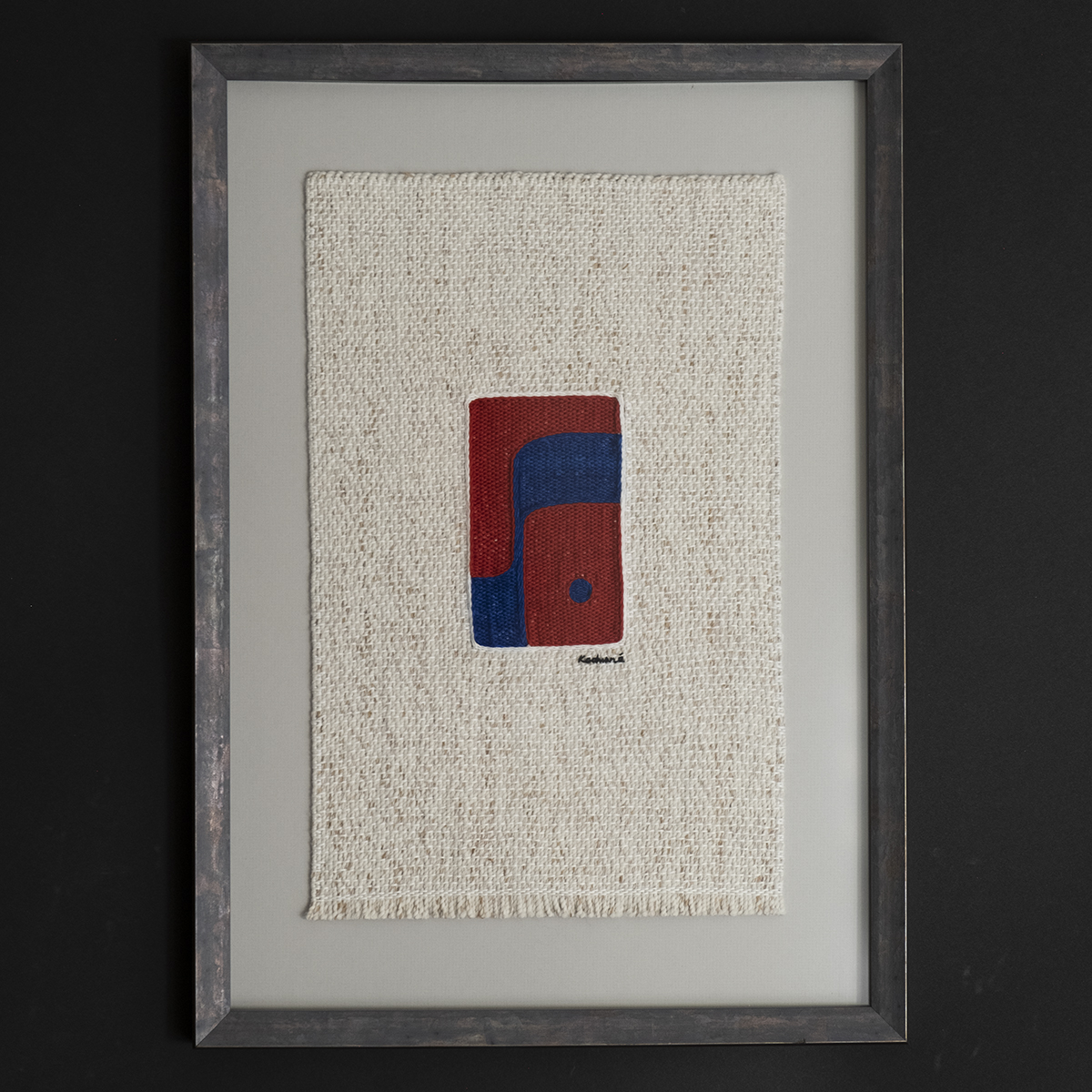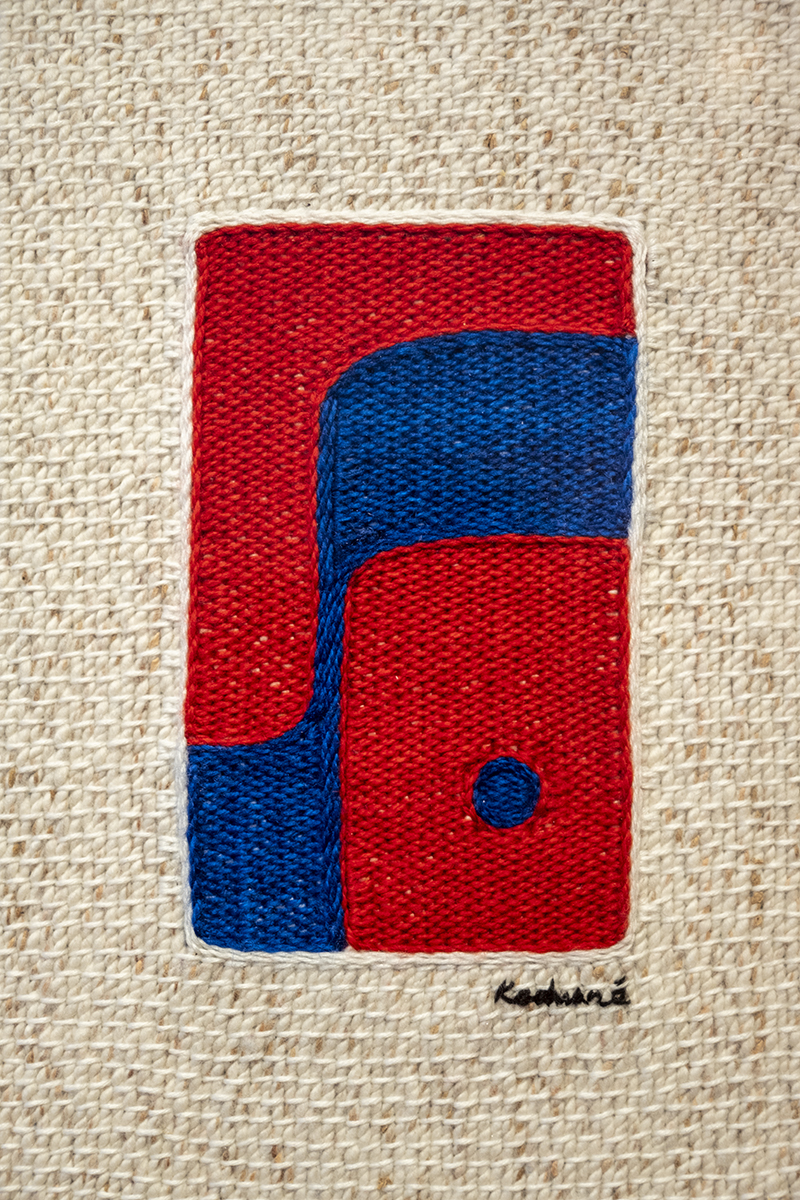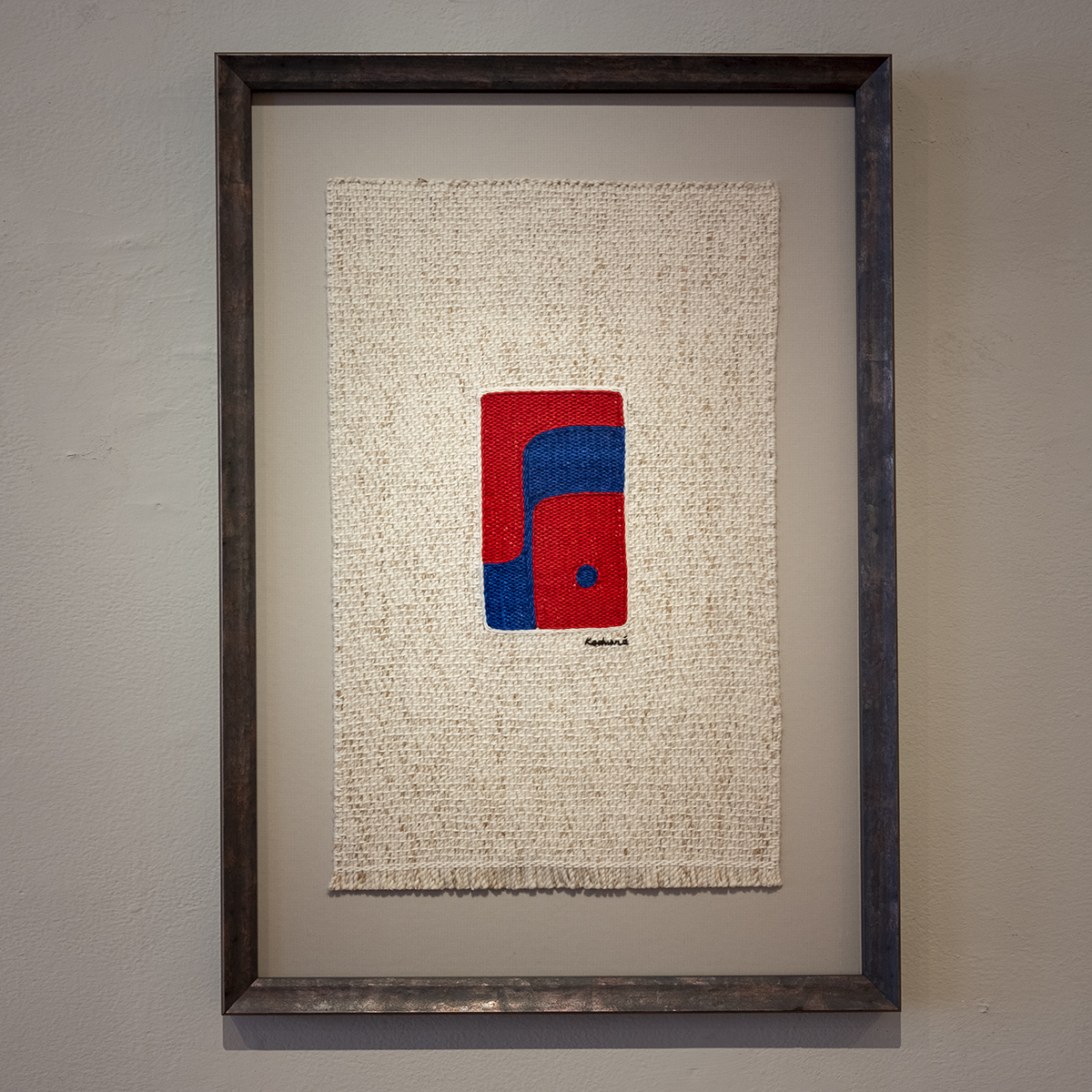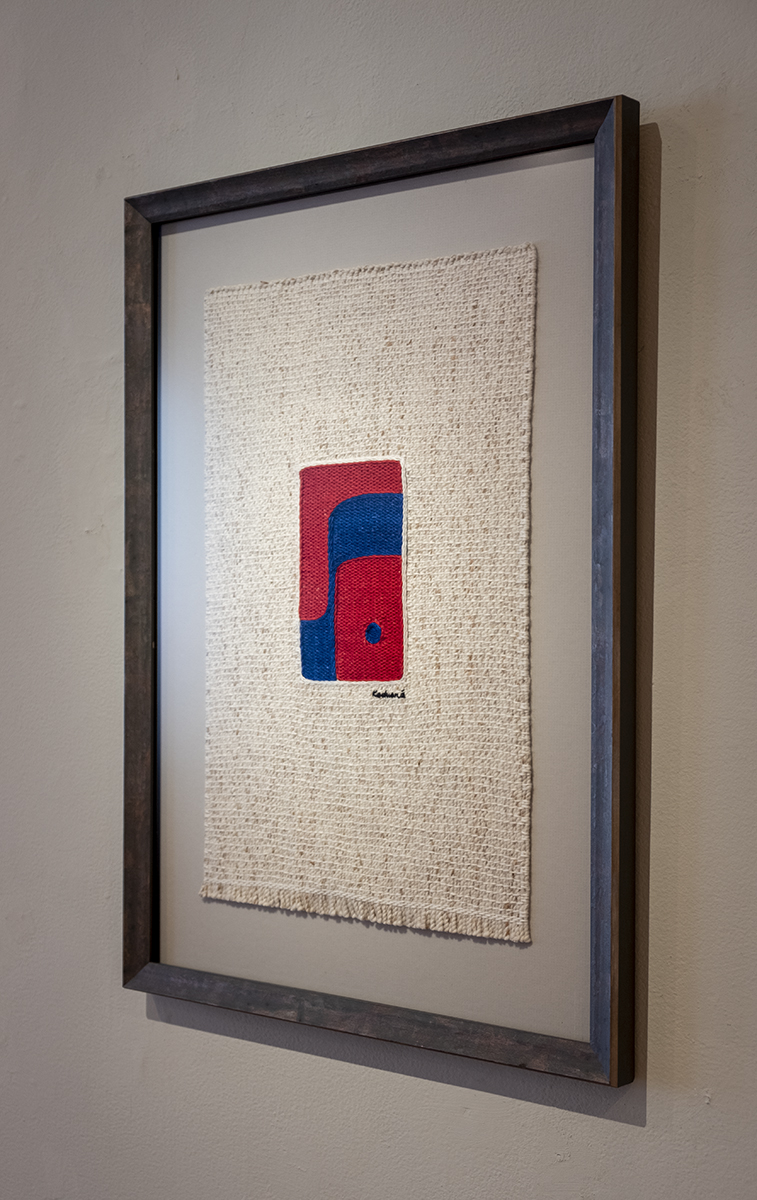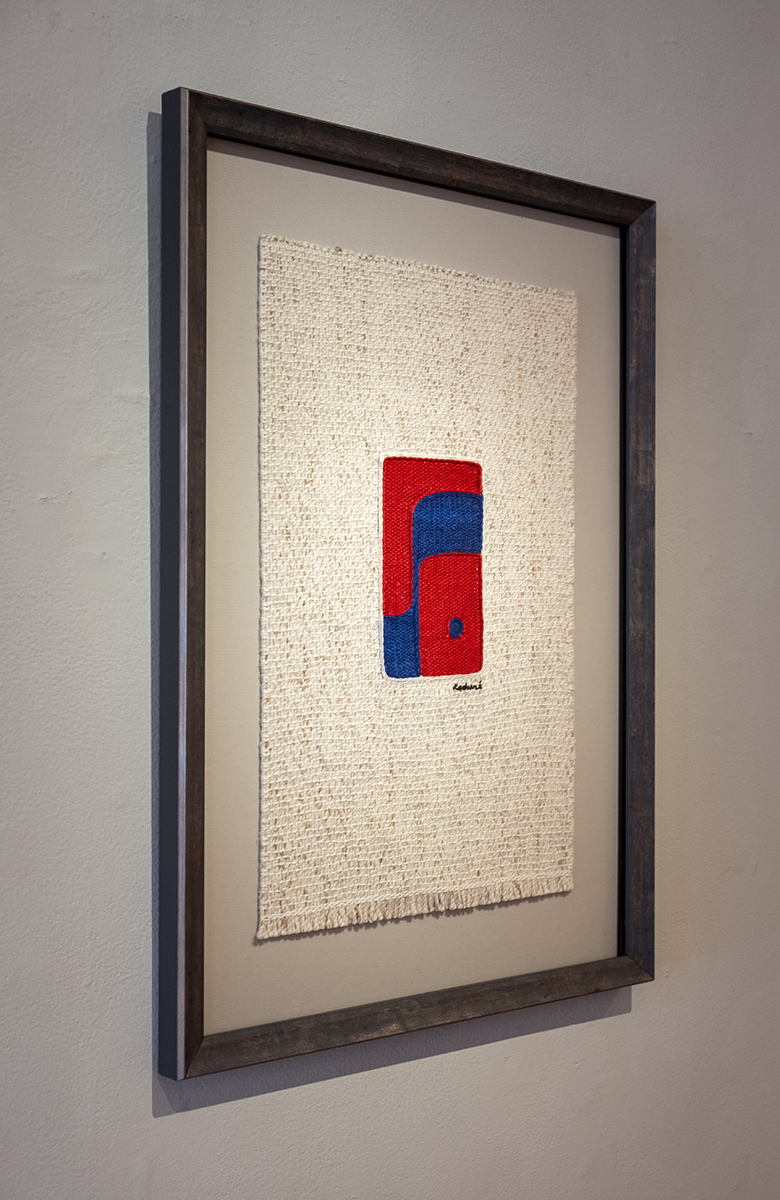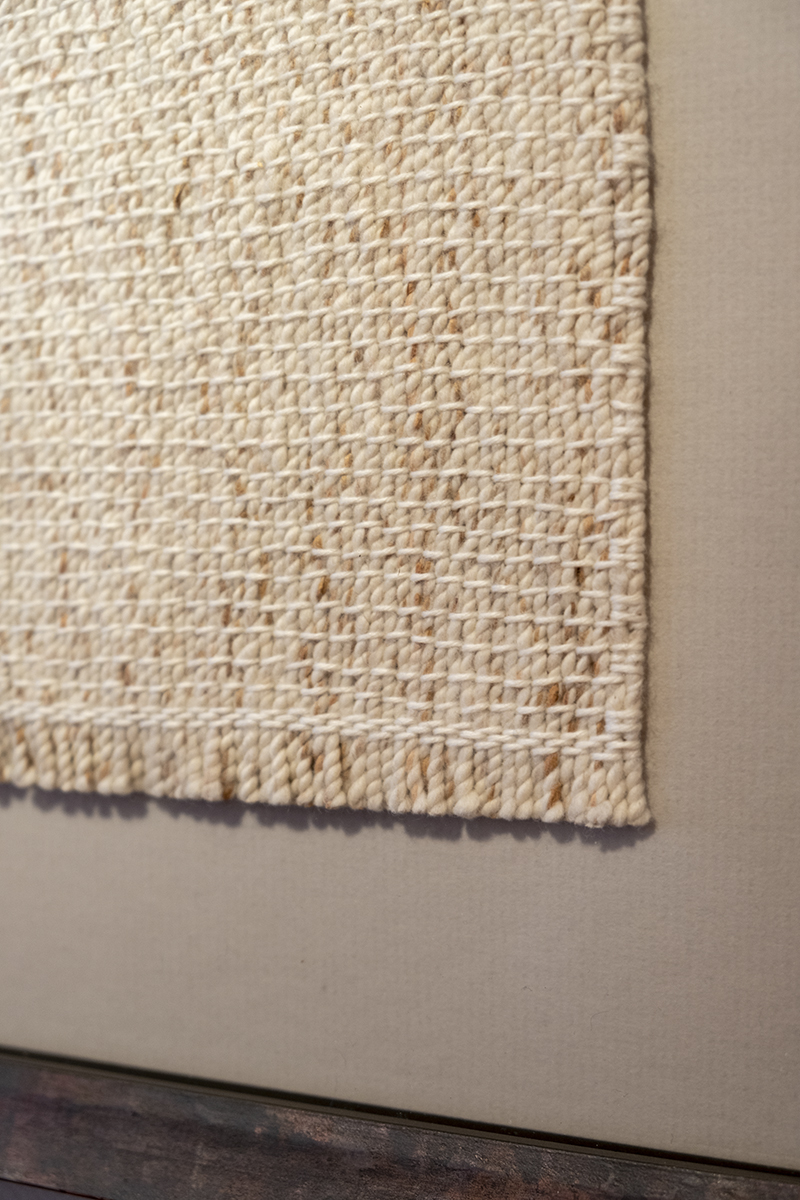Blue and Red (Where Little Bear Learned to Hide From the Sun)
“My mother was a Chilkat ceremonial regalia maker, and now I am one too. Weaving regalia for ceremony can be a heavy responsibility, as a finished robe embodies generations of ancestral knowledge and hundreds of hours of technical labor. At the same time, it is a great honor to be the instrument through which our ancestors speak their stories and dreams.
One of the most influential mentors in my life has been Cecil Touchon, who is a non-Indigenous American contemporary artist and theorist. Cecil was a close friend of my family and spent many studio hours training us in the art of collage. He encouraged us to collage on watercolor paper with large blank margins on all sides, and to work intuitively, simply, and quickly. Collage work became a fun family pasttime growing up, and allowed us a regular practice in traversing the present moment, outside of ancestral tradition or the weight of preparing for ceremony. It was another way to bring together my family of mixed heritage and culture.
In Blue and Red, I use my primary art medium of Chilkat and Ravenstail weaving of my Tlingit homelands to depict an abstract contemporary “collage” on woven “watercolor paper” with large margins and my signature “signed” on the bottom edge. Instead of three hours of cutting and pasting, this weaving took over 50 hours from start to finish. I honor my greatest influences, from both within and without my Indigenous heritage, respecting the profoundly valuable lessons they both have offered me. “Blue and Red” tells a story about the contemporary Indigenous present.”
Furthermore, by weaving wall (vs. wearable) art, I point out the institutionalized practice of valuing traditionally male-gendered artistic mediums and forms at an outrageously disproportionate rate to traditionally female-gendered artistic genres.
Cecil was inspired by Ellsworth Kelly, and I specifically used Kelly’s “Blue Red” painting to inform this new weaving’s central design.
Kelly’s painted works are being sold on auction for several million dollars now.
Chilkat robes with surface areas comparable in scale to Kelly’s painted work, woven within the same century (following ancestral technological practices, using place-based materials, requiring around 1500 hours to weave and decades to master) are being sold at auction for $20-50k. Their original weavers are oftentimes unknown.
I aim to remind us of the fact that the moment a work of art is made wearable, its perceived value is slashed. This phenomenon exists within contemporary indigenous communities as well. Even though regalia is one of the most essential components to ceremony — and thus, one of the key elements of community vitality and cultural wealth — its creation has not been supported economically by community leaders/institutions even remotely in proportion to public art (mostly male-made).
Of course, outside of the indigenous art world, the roots of undervaluing “craft” are securely attached to the foundation of the patriarchy.
Those of us that practice hand work have accepted this price structure. We’ve internalized its perceived value.
The work’s title is an obvious nod to Kelly’s work. I then wanted to use the title as an indicator that this work is not simply intuitive, spontaneous, abstract work – it’s very calculated and entirely rooted in ancestral knowledge that includes elements beyond the physical/tangible.
This design is based on a vision I had about myself and the way I have learned to inhabit the world. As a “cub” (“Ursala” means ‘Bear’), I was lonely and developed a mechanism to deal with an overwhelming sense of abandonment. This happened. In my vision, I saw and felt myself as a lone cub cowering in a dark, cold [yet earthy, solid and dependable] cave. This sensation is not only familiar, but has come to remind me of my childhood. Therefore is a sensation that I continue to recreate in my adult life albeit subconsciously. This familiar — and therefore “comfortable” — state is one of seclusion from the wide open world. Being in it allows me to turn inward, without the bright overstimulation of the Outside, without the influence of others. Even though I now live a very integrated, out-ward facing life, I still manage to maintain a protective “cave” around me/my heart, not truly letting others in, including the profundity and healing powers of the natural world (the Sun). I do not believe I’m alone in finding and using this coping mechanism of self-isolation.
These two colors, red and blue, represent warmth/movement and chill/stability.
Chilkat weavings encompass the intangible, speaking to and holding incredible mass that extends outside of materials and form.
– Ursala Hudson

